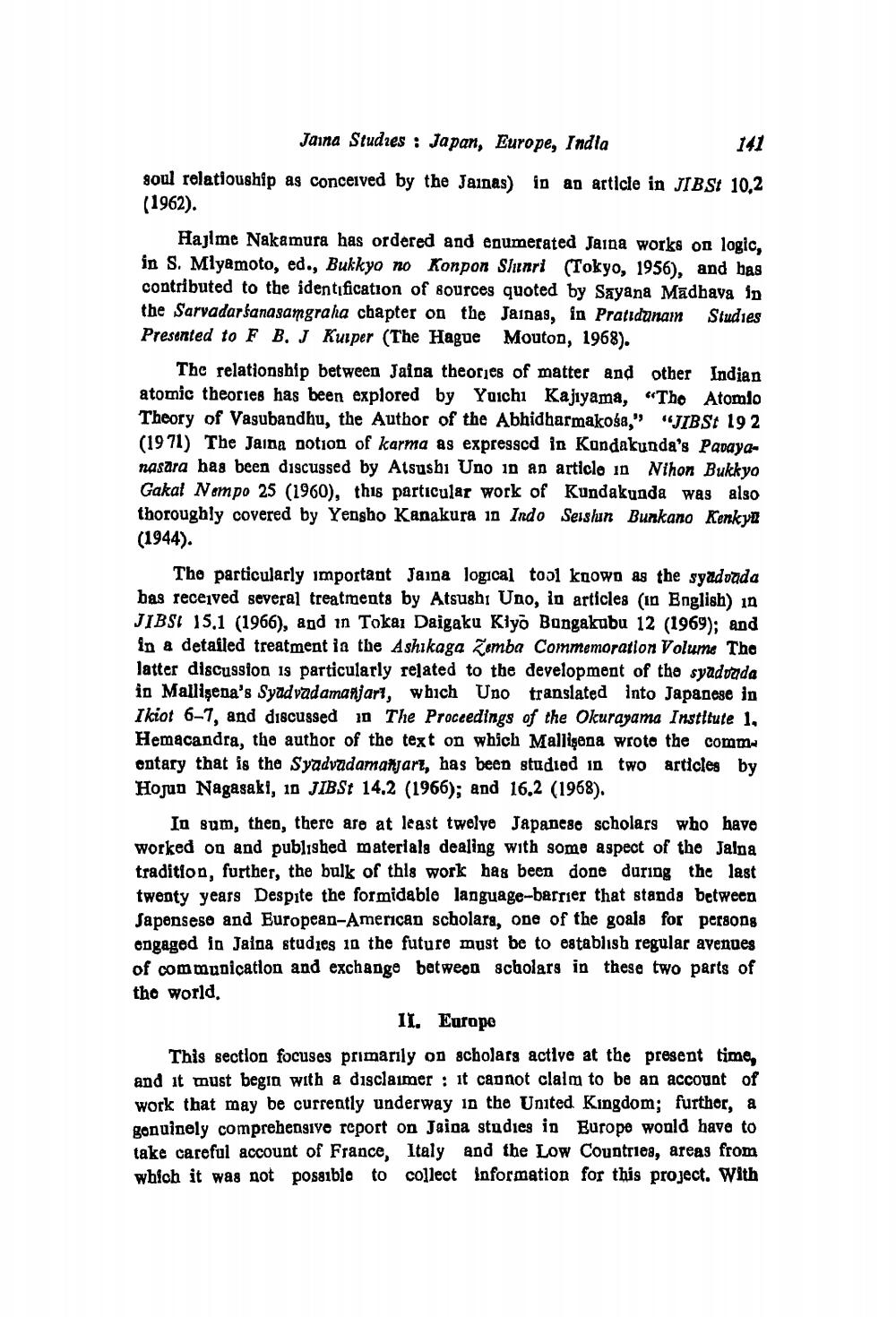________________
Jaina Studies : Japan, Europe, India
141
soul relatiouship as conceived by the Jainas) in an article in JIBSt 10,2 (1962).
Hajime Nakamura has ordered and enumerated Jaipa works on logic, in S. Mlyamoto, ed., Bukkyo no Konpon Shunri (Tokyo, 1956), and has contributed to the identification of sources quoted by Sayana Madhava in the Sarvadarśanasangraha chapter on the Jainas, in Pratidunain Studies Presented to F B J Kuiper (The Hague Mouton, 1968).
The relationship between Jaina theories of matter and other Indian atomic theories has been explored by Yuichi Kajiyama, “The Atomlo Theory of Vasubandhu, the Author of the Abhidharmakosa," "IBSt 192 (1971) The Jaina notion of karma as expressed in Kundakuoda's Padayanasara has been discussed by Atsushi Uno in an article in Nihon Bukkyo Gakat Nempo 25 (1960), this particular work of Kundakunda was also thoroughly covered by Yengho Kanakura in Indo Seishin Bunkano Kenkyu (1944).
The particularly important Jaina logical tool known as the syadonda has received several treatments by Atsushi Uno, in articles (in English) in JIBSI 15.1 (1966), and in Tokaz Daigaku Kiyo Bongakubu 12 (1969); and in a detailed treatment ia the Ashikaga Zemba Commemoration Volume The latter discussion is particularly related to the development of the syadonda in Mallişena's Syadvadamanjart, which Uno translated into Japanese in Ikiot 6-7, and discussed in The Proceedings of the Okurayama Institute 1, Hemacandra, the author of the text on which Mallişena wrote the comm. entary that is the Syadvadamañjart, has been studied in two articles by Hojo Nagasaki, 10 JIBSt 14,2 (1966); and 16.2 (1968).
In sum, then, there are at least twelye Japanese scholars who have worked on and published materials dealing with some aspect of the Jalna tradition, further, the bulk of this work has been done during the last twenty years Despite the formidable language-barrier that stands between Sapensese and European-American scholars, one of the goals for persons engaged in Jaina studies in the future must be to establish regular avenues of communication and exchange between scholars in these two parts of the world.
II. Europe
This section focuses primarily on scholars active at the present time, and it must begin with a disclaimer : it cannot clalm to be an account of work that may be currently underway in the United Kingdom; further, a genuinely comprehensive report on Jaina studies in Europe would have to take careful account of France, Italy and the Low Countries, areas from which it was not possible to collect information for this project. With




